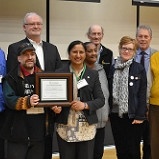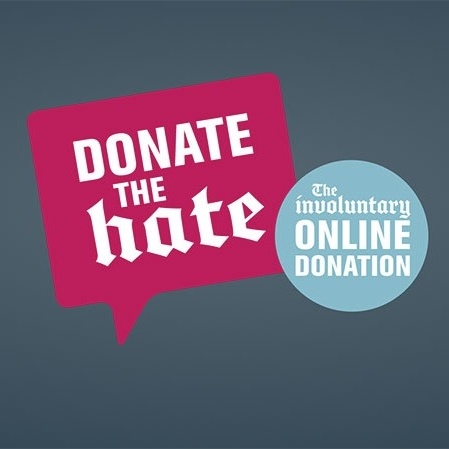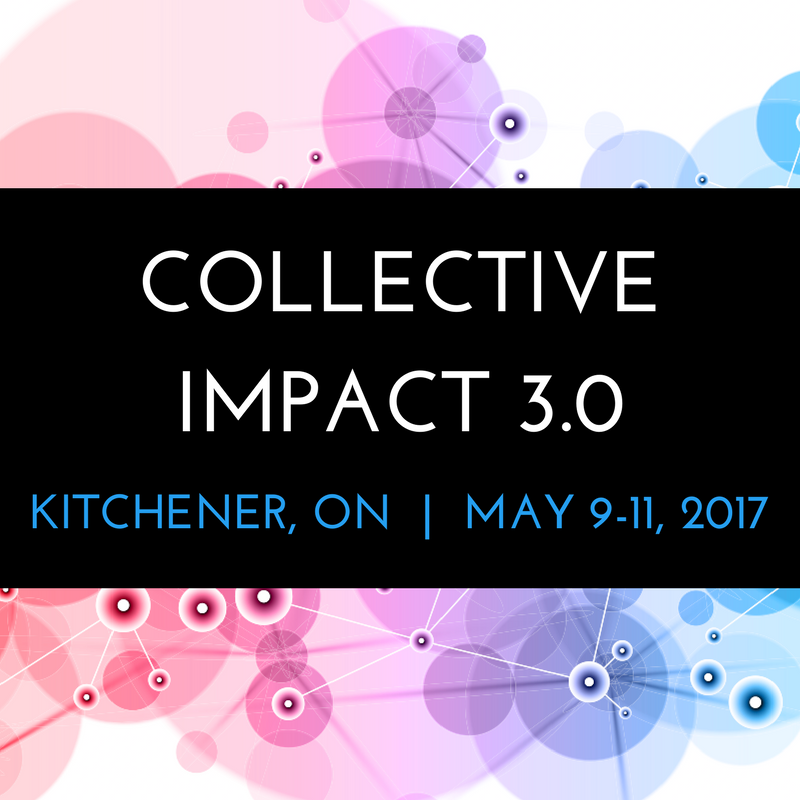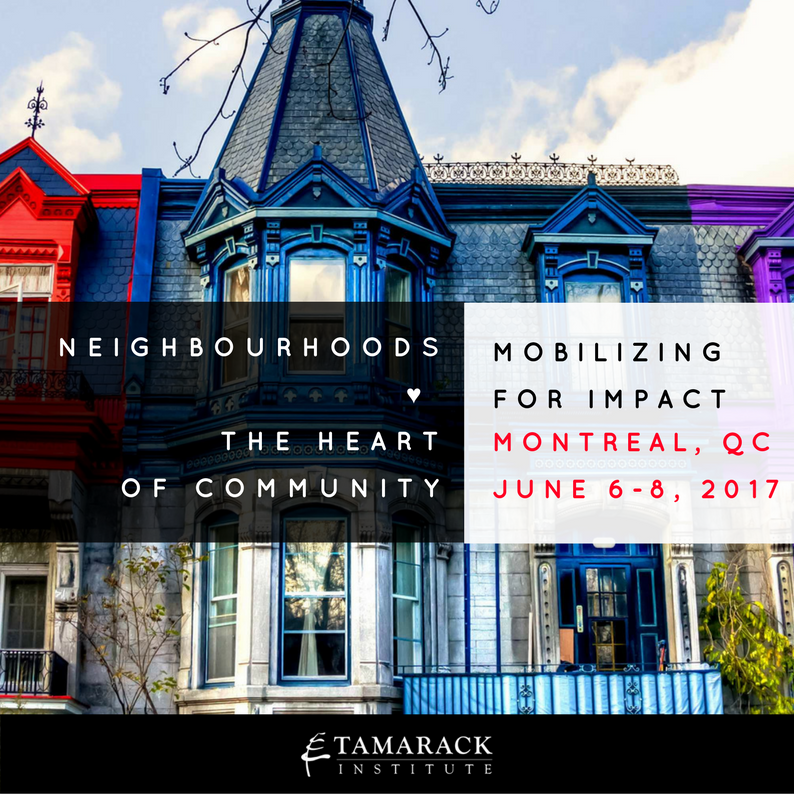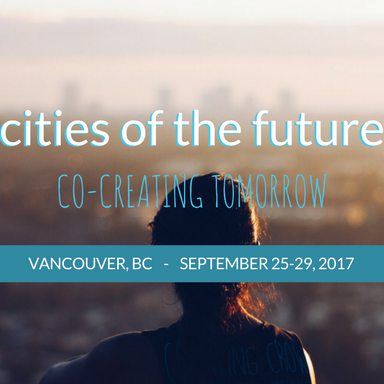Montréal: A Leader in Neighbourhood Innovation 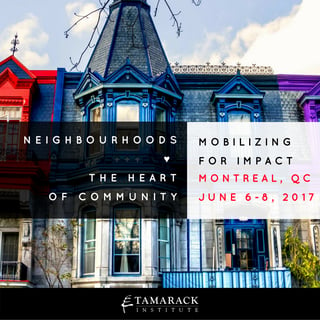
BY: SYLVIA CHEUY
Montréal is the second largest city in Canada. Throughout its 375-year history, Montréal has experienced several transformations. Multiple waves of immigration have contributed to making Montréal one of the most diverse Canadian cities and a model of bilingualism and tolerance.
A significant part of the revitalization of this dynamic city is happening at the neighbourhood level. In 2015, a unique neighbourhood-based Collective Impact Project (CIP/PIC) was launched in Montréal with the collective investment of a group of philanthropic partners, led by Centraide of Greater Montréal.
The CIP/PIC is NOT a program or a fund but provides a new form of community support offered to neighbourhoods that “reinforces but does not supplant Centraide's normal funding methods.” A collaborative funding investment of seven major donors has created a shared investment of $21 million over 5 years to establish Montréal’s Collective Impact Project. Its aim is to invest in flexible and adaptive ways to provide “an accelerator of change that aims to increase the impact of collective action in the city’s priority neighbourhoods.”
In the spring of 2016, 17 Montréal neighbourhoods were chosen as the “first wave” of the neighbourhood-based Collective Impact Initiative. Each of these neighbourhoods has a unique identity as well as specific issues, strengths, challenges and vision for the future. But what they all have in common is a firm commitment to a collective process to improve their communities and their living conditions. These 17 neighbourhoods are just some of the more than 30 city neighbourhoods – each facing poverty and social exclusion – that have established neighbourhood roundtables that engage community agencies and residents in working together to assemble the resources needed to transform their neighbourhood for the better.
Tamarack is thrilled to be partnering with Centraide du Grand Montréal to host Neighbourhoods ♥ The Heart of Community: Mobilizing for Impact from June 6-8, 2017. This event will be inspired by the work of three leading keynotes. Nathalie Fortin, Chair of the Montréal Neighbourhood Tables Coalition and a long-time community activist; international neighbourhood-builder Michael McAffee, Co-Director of the Promise Neighborhoods Institute (PNI) and Vice-President for Programs at PolicyLink; and, renown community-builder John McKnight, co-founder of Asset-Based Community Development Institute who will also be sharing his latest thinking on what it takes to ensure that residents and organizations can work effectively together. We hope that you can join us!
Learn More
- Register now to join us in Montréal for Neighbourhoods ♥ The Heart of Community: Mobilizing for Impact, June 6-8, 2017
- Learn more about Centraide of Greater Montréal and the city’s neighbourhood-based Collective Impact Project
- Watch this video about Montreal’s Neighbourhood Roundtables
Share this article:
An Essential Read for Non-Profit Leaders 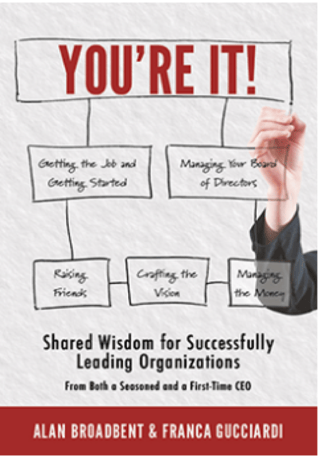
BY: PAUL BORN
Tamarack Institute’s Board Chair, Alan Broadbent, has written a new book and it is fantastic!
If the next step in your career is leading a non-profit organization, you are likely thinking about all that it takes to make your organization strong: managing a board, raising money, talking to major donors, preparing for a fundraising gala, and speaking to government officials. All in the same day. Lying in bed at night, you might be asking yourself: Am I ready? Will I be able to handle the pressure? What exactly will be expected of me?
Leading a non-profit organization is a challenge and You’re It! Shared Wisdom for Successfully Leading Organizations from Both a Seasoned and a First-Time CEO is one of the very few leadership books on the market that addresses this unique challenge. It is a book that speaks to those of us who want to do our part in leading social change. The book grew out of two decades worth of conversations between Alan Broadbent, Chairman of Maytree and Tamarack, and Franca Gucciardi, CEO of the Loran Scholars Foundation. Franca first met Alan when she was still a student, and over time he became one of her key go-to people for leadership advice - after she got the call from the board of the Loran Scholars Foundation asking her to consider taking on the role of CEO.
The authors take the reader through the life cycle of being CEO of a non-profit organization: from deciding whether to accept the job offer; your first days on the job; creating plans for yourself and your new organization; and, how to set up your team and networks. It reviews: how to best work with a board of directors; raise funds and friends; and, manage the money. Finally, and somewhat surprisingly, the authors write about the importance of moving on.
As you read along, you will pick up important pieces of advice to help you in your leadership journey. Alan and Franca’s hope is that You’re It! Shared Wisdom for Successfully Leading Organizations from Both a Seasoned and a First-Time CEO, "serves as a friendly reminder of the importance of your leadership role. A committed, effective leader of integrity can make a huge difference to improving the impact an organization has, and thus an impact on the health and well-being of our society.”
Not only is You’re It! an invaluable resource for someone just starting their leadership journey, it is also a resource for those who have been in their position for a while. A quick review, for example, of the chapter on how to raise awareness for your cause could help you put together your next successful capital campaign. Keep it on your bookshelf to guide you through the tricky areas you have to deal with every day.
Learn More:
- Buy You’re It! from Zephyr Press, Amazon Canada, Amazon US or Kobo
- Explore You’re It! – review the Table of Contents or download the introduction
- Register to attend a You’re It! book launch - Toronto (May 4, 6-8 pm) & Waterloo (May 25, 4-6 pm)
Share this article:
Collaborating with the Enemy 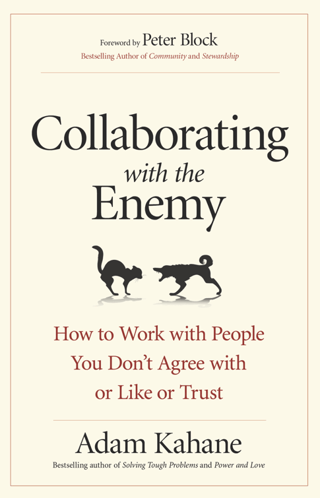
BY: MARK CABAJ
In his book, Tipping Point, Malcolm Gladwell, argues that the successful adoption of new ideas – and the beginning of social movements – depends on three things: the quality of the message, the credibility of the messenger, and the timing of the message.
In Collaborating with the Enemy: Working with People You Don’t Agree With, Like or Trust, author Adam Kahane may have fulfilled all three conditions for the countless people, organizations and networks working together to solve tough and complex challenges.
The timing of the book is impeccable. In a world of where many people prefer the simple world of polarized camps – where people meet only with those who share the same values, interests and opinions; demonize others; and, are willing to tolerate “alternative facts” – we all need a reminder that it is necessary and possible to work with very different values, interests and perspectives.
The messenger – Adam Kahane – is the right messenger. There are few people in the world so intimately involved in trying to solve such a broad variety of tough problems, ranging from apartheid, drug wars, separatism, etc. There are fewer still that share their insights and struggles, successes and failures, with such clarity and humility.
The implications of the message – that to find more effective ways of making progress on tough problems, we must seek to create stretch rather than conventional collaboration – are compelling. Drawing on his experiences in familiar and new change efforts across the globe, Kahane skillfully lays out three key features of stretch collaboration:
- While conventional collaboration tends to be organized around like-minded people trying to find ways to work in harmony, stretch collaboration requires us to engage with people who see the world differently and embrace – and creatively use – the inevitable conflict of perspectives and power that arise;
- While conventional collaboration typically seeks a single and elegant definition of the problem and one best solution, stretch collaboration encourages us to experiment our way forward with multiple options or possibilities; and,
- While conventional collaboration often emphasizes an arms-length to direct and/or change others, stretch collaboration requires us to “step into the game”, participate fully in the work, and be prepared to change ourselves. As Kahane has noted before, “Its tough to be part of the solution if you are not part of the problem,” and making progress on tough issues often requires us to adjust – sometimes radically – our own views and behaviours.
While Kahane’s exploration of stretch collaboration is compelling, he is careful to point out it is not always possible or even desirable. To this end, he explores three alternative strategies:
- Trying to change a tough situation unilaterally, without working with others, often by forcing others to “lose” and/or be changed
- Trying to adapt to a situation where the conditions for change appear too dim for the possibility of change
- Simply exiting a situation that we feel we can no longer cope
Would-be change makers that feel that they have too little power to collaborative effectively, or that collaboration requires too much compromise or is apt to yield too little progress over too long a period, should consider these options before they deeply commit to the difficult road of stretch collaboration.
In his earlier book, Solving Tough Problems, Kahane recounts a popular joke in South Africa that described two options - a practical option and a miraculous option - on how the country’s citizens might proceed with their difficult transition from apartheid:
- The practical option was that everyone would get down on their knees and pray for a group of angels to descend from heaven and fix the situation; or,
- The miraculous option was that people elect to talk with and work with each other until they found a way forward together.
In Collaborating with the Enemy, Kahane offers a miraculous framework for approaching collaboration that participants in the thousands of coalitions, collaborations, networks, collective impact initiatives in Canada – and the many more across the world – will find practical and inspiring.
Learn More:
- Register for Lessons in Collaborating with the Enemy – a webinar with Adam Kahane & Mark Cabaj – June 15th, 2017 at 1:00 pm EDT
- Buy a copy of Collaborating with the Enemy from Amazon, Indiebound, Barnes&Noble, Indigo, or Berrett-Koehler
- Read a summary of Collaborating with the Enemy in English or Spanish, or listen to a podcast.
- Visit adamkahane.com for information on how to order his book as well as other downloads and resources
- Learn more about Adam Kahan and visit his website: Reos Partners
Share this article:
When Business is Engaged in Poverty Reduction
BY: KIRSTI BATTISTA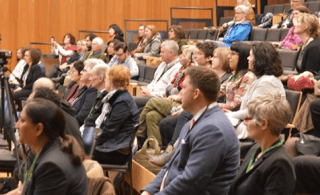
Together with Mayor Fred Eisenberger’s Office, the City of Hamilton and Hamilton Roundtable for Poverty Reduction, Tamarack’s Vibrant Communities Canada hosted its third annual summit, Cities Reducing Poverty: When Business is Engaged, at the Hamilton Convention Centre from April 4-6, 2017.
Over the three days, more than 300 delegates representing business, government, lived experience, and the community sector, came together to share stories about their local progress and innovations, learn about the federal government’s efforts to tackle poverty, and deepen their understanding about the fundamental role that business can (and should) play in eliminating poverty.
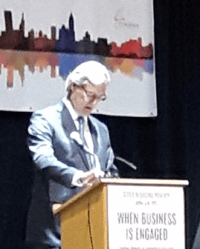 The summit came to life through the powerful and inspiring teachings of 36 plenary speakers and 65 experienced, knowledgeable workshop leaders. Keynote speakers included: The Honourable Chris Ballard, Minister Responsible for the Poverty Reduction Strategy; Alan Broadbent, CEO of the Avana Capital Corporation; Renu Manhane, Chief Commissioner of the Ontario Human Rights Commission; Colette Murphy, Executive Director of Atkinson Foundation; David Alston, Chief Entrepreneur in Residence with the Government of New Brunswick; Michael McCain, President and CEO of Maple Leaf Foods, and Mark Chamberlain, President and CEO of PV Labs. Click here to listen to Michael McCain’s speech “Food Security: It's Time to Act”.
The summit came to life through the powerful and inspiring teachings of 36 plenary speakers and 65 experienced, knowledgeable workshop leaders. Keynote speakers included: The Honourable Chris Ballard, Minister Responsible for the Poverty Reduction Strategy; Alan Broadbent, CEO of the Avana Capital Corporation; Renu Manhane, Chief Commissioner of the Ontario Human Rights Commission; Colette Murphy, Executive Director of Atkinson Foundation; David Alston, Chief Entrepreneur in Residence with the Government of New Brunswick; Michael McCain, President and CEO of Maple Leaf Foods, and Mark Chamberlain, President and CEO of PV Labs. Click here to listen to Michael McCain’s speech “Food Security: It's Time to Act”.
Skillfully moderated panel sessions allowed the audience to explore avenues for poverty reduction from the viewpoints of business leaders, mayors, basic income and human rights policy experts, and individuals with lived experience of poverty. Click here to watch the conversation between Penni Eisenhaur, Hilary Chapple, Yvonne Maracle and Parliamentary Secretary Adam Vaughan.
A series of 21 peer-led workshops also gave delegates the opportunity to dive deeper into poverty related topics like Human Rights, Living 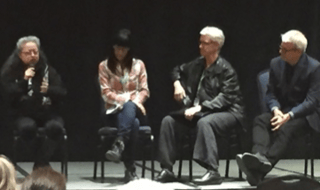 Wage, Engaging Business, Alternatives to Predatory Lending, Financial Empowerment, Storytelling with Purpose, Decent Work, the Role of Social Enterprise, Mobilizing Action through Community Engagement, Campus-Community Partnerships, and Indigenous Realities. You can access the workshop presentations here.
Wage, Engaging Business, Alternatives to Predatory Lending, Financial Empowerment, Storytelling with Purpose, Decent Work, the Role of Social Enterprise, Mobilizing Action through Community Engagement, Campus-Community Partnerships, and Indigenous Realities. You can access the workshop presentations here.
Experiential bus tours also gave delegates the chance to learn about how local agencies are addressing poverty in Hamilton. Tour venues included the McQuestern Urban Farm, Circuit 4.0, Xperience Annex, the Threshold School of Building and City Housing, Eva Rothwell Centre, Mohawk City School and the Indigenous Gathering Place at Mohawk College, among others. Some lucky delegates also got to experience a Sobi bicycle tour through some of Hamilton’s most notable neighbourhoods; while others experienced a poverty simulation based on the social determinants of health and attended a neighbourhood action planning workshop. Check out the #CRPSummit social media story for tour highlights and photos.
Another highlight at the event was the release of Vibrant Communities Canada’s latest publication, TEN: A Guide for Businesses Reducing Poverty, which includes ten good ideas on how businesses can contribute to poverty reduction, a self-assessment, and ten tips for getting started. Each good idea comes with a case study to show how business leaders and their colleagues are having success in improving lives and community conditions nationwide. Download your copy of TEN: A Guide for Cities Reducing Poverty.
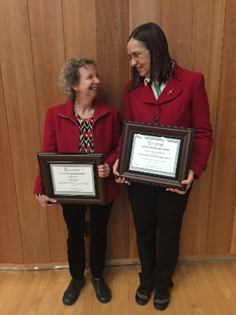 Vibrant Communities Canada was also pleased to recognize deserving champions’ outstanding poverty reduction efforts this year through an awards ceremony. The awards committee selected the following winners: Leadership in Advancing Poverty Reduction - Hamilton Roundtable for Poverty Reduction; Game Changer Innovation - BC Living Wage for Families Campaign; Business Champion - the Business Community Anti-Poverty Initiative of Saint John; Engaging People with Lived Experience - Saskatoon Poverty Reduction Partnership; Outstanding Contribution to the Vibrant Communities Canada learning community - Adam Vasey, former Director of Pathway to Potential Windsor-Essex; and, Legacy Award - Cathy Wright, former Executive Director of Living SJ.
Vibrant Communities Canada was also pleased to recognize deserving champions’ outstanding poverty reduction efforts this year through an awards ceremony. The awards committee selected the following winners: Leadership in Advancing Poverty Reduction - Hamilton Roundtable for Poverty Reduction; Game Changer Innovation - BC Living Wage for Families Campaign; Business Champion - the Business Community Anti-Poverty Initiative of Saint John; Engaging People with Lived Experience - Saskatoon Poverty Reduction Partnership; Outstanding Contribution to the Vibrant Communities Canada learning community - Adam Vasey, former Director of Pathway to Potential Windsor-Essex; and, Legacy Award - Cathy Wright, former Executive Director of Living SJ.
The Vibrant Communities Canada team would like to extend a huge thank you to our event co-hosts, sponsors, partners, members, delegates and colleagues for their incredible contributions to this year’s Summit. We couldn’t do it without you. As we continue our hard work, we are inspired by delegate Scott Cronkwright’s powerful message of experience: “If we chase amazing, amazing chases us… you have saved a life, you have saved a family, and created a legacy. Thank you for the work that you do.” You can read Scott’s personal story here.
Learn More:
- Visit the Vibrant Communities Canada website for more resources and tools on poverty-reduction
Share this article:
The Power of Building a Plan on a Page 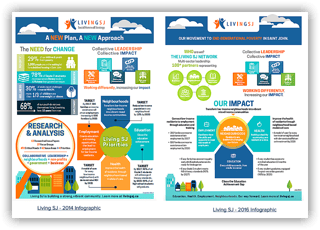
BY: LIZ WEAVER
Collective impact efforts are complex and challenging because there are so many moving parts. This presents a communications challenge. There are some emerging examples of collective impact efforts that have successfully synthesized their work to a Plan on a Page.
Using an infographic approach, Child Friendly Leeds in the UK and Living SJ in Saint John, New Brunswick are able to tell their collective impact story in a compelling and user-friendly way that is limited to one piece of paper. In the case of Child Friendly Leeds, their plan in fact takes up both the back and front of a piece of paper. Child Friendly Leeds has coined the phrase Plan on a Page but it is something that collaborative efforts should consider adopting. The Child Friendly Leeds Plan on a Page has seven main sections:
- What we’ll do
- How we’ll do it
- How we’ll know if we are making a difference
- The way we work
- Our city
- Working together
- Find out more
On their webpage, Living SJ’s plan on a page has evolved over time. The 2014 Living SJ example has four strategies including neighbourhoods, education, access to health, and employment. In 2016, Living SJ moved the neighbourhood strategy to the core of their work recognizing that the employment, education and health access work was driven by the neighbourhood strategy.
So how do you build a Plan on a Page? We are releasing a new tool to help you. We hope you will use the tool to build your plan and then share it with us. We also welcome your advice and suggestions about how we can improve this tool.
Learn More:
- Visit Child Friendly Leeds
- Visit the Living SJ website and view their 2014 Plan on a Page and their 2016 Plan on a Page
- Download Tamarack’s Plan on a Page Tool to create your own
Share this article:
PLACEMAKING: PUTTING A CREATIVE STAMP ON YOUR NEIGHBOURHOOD
By: Kris Culp
Read the Post
2017 CITIES REDUCING POVERTY AWARDS
By: Alison Homer
Read the Post
THE FUTURE OF CITIZEN ENGAGEMENT IS VINYL
By: Kent Aitken
Read the Post
CREATING A MORE INCLUSIVE AND POSITIVE ONLINE COMMUNITY
By: Connor Judge
Read the Post
THE POVERTY STUDIES SUMMER INSTITUTE
By: Derek Cook
Read the Post
DATA IS MORE THAN JUST A FOUR-LETTER WORD
By: Deb Halliday
Read the Post
Collective Impact 3.0
May 9-11, 2017
Kitchener, ON
Collective Impact 3.0 is a three-day intensive workshop for practitioners in early stage, mid stage and later stage community change work. The workshop will explore the latest in the practice of collective impact from experts, practitioners and early adopters of the work.
This workshop is best suited to those who have an interest and some basic knowledge and experience with collective impact and are eager to tackle the challenging but critical task of moving the needle on complex community challenges like poverty, homelessness, environmental change, early learning and active living.
This event takes place next week, so this is your last chance to register.
Neighbourhoods ♥ The Heart of Community: Mobilizing for Impact
June 6-8, 2017
Montreal, QC
Neighbourhoods ♥ The Heart of Community: Mobilizing for Impact is a unique national learning event that brings together the most innovative and inspiring examples of neighbourhood action at its best and then invites us to accelerate our effectiveness by learning from one another and imagining how we can ensure our collective work has greater impact.
Participants at this event will be introduced to effective programs and resources that are successfully reconnecting neighbours, deepening community and advancing positive change on a range of complex issues.
Community Change Institute:
Cities of the Future: Co-Creating Tomorrow
September 25-29, 2017
Vancouver, BC
The pressures facing our cities is intense. At the same time, there is immense hope as we look to each other to co-create the future we desire. Cities of the Future is a global movement focusing on people, government, initiatives, technologies and organizations working to increase the quality of life in today’s cities.
The 2017 Community Change Institute taking place September 25-29, 2017 in Vancouver, BC, will be a truly transformational learning experience, bringing leading thinkers together with community change-makers to explore the critical role citizens, organizations and government play in co-creating the future of cities. Learn through inspiring keynote speakers, peer discussion, design labs, arts and creativity, community tours, and over 30 workshops.
Learn more and be the first to Register.
Deepening Community for Collective Impact
May 30, 2017
Caledon, ON
Join Paul Born for a one day workshop where you will learn how to engage and deepen your community in order to build a common agenda for large scale change. Paul will share not only the fundamental principles of Collective Impact, he will provide key insights as one of North America’s top Community Engagement leaders on how Deepening Community can sustain us as leaders and produce the outcomes we so desire.
Webinars
Can’t make it? Don’t fret.
By registering you will also receive a recording of the live session along with related resources.
Building Resilient Neighbourhoods
Guests: Stacy Barter, Michelle Colussi and Rob Wipond
Host: Devon Kerslake, Community Animator, Deepening Community
Date: May 10, 2017 | 1:00 - 2:00 p.m. EDT
You don’t need to be afraid anymore! How to authentically engage the community while remaining in control
Guest: Matt Crozier, Co-Founder & CEO, Bang the Table
Host: Lisa Attygalle, Director of Engagement, Tamarack Institute
Date: May 17, 2017 | 1:00 - 2:00 p.m. EDT
B-Mincome: Piloting Basic Income in the City of Barcelona
Guest: Lluís Torrens Mèlich, Director of Planning and Innovation, Department of Social Rights, City Council of Barcelona
Host: Vibrant Communities Canada
Date: May 18, 2017 | 1:00 - 2:00 p.m. EDT
Measurement and Evaluation of Community Engagement
Speaker: Mark Holmgren, Director, Vibrant Communities Canada
Date: May 30, 2017 | 12:00 - 1:00 p.m. EDT


